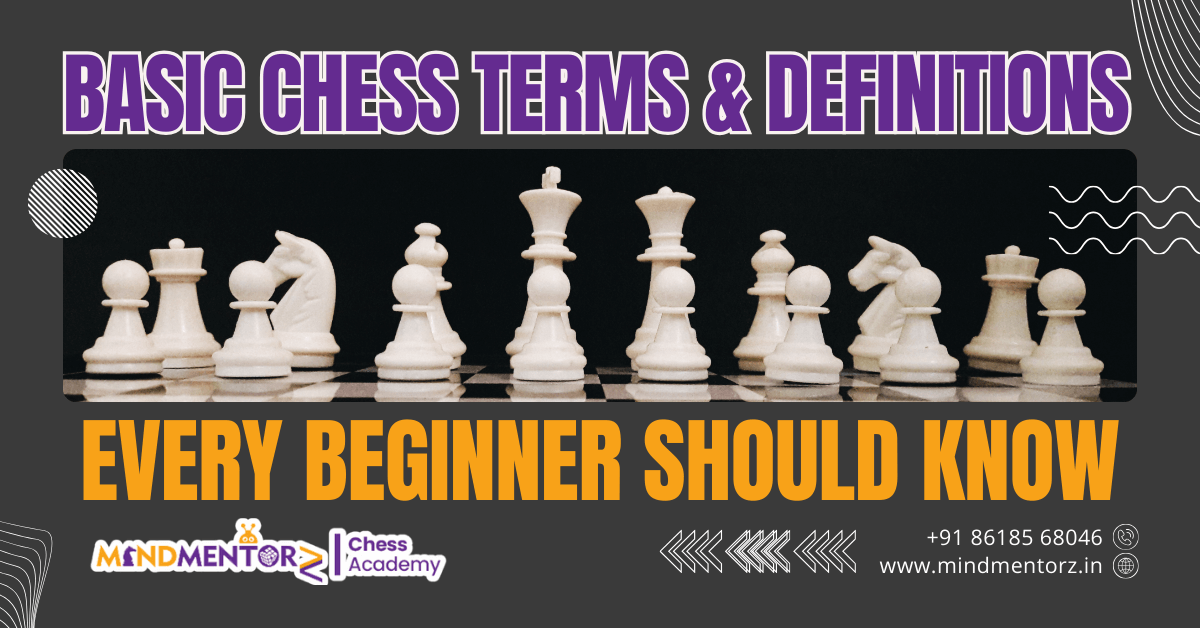
If you are a beginner and chess aspirant, chances are high that you are doing all that takes to get better at your games. From reading about chess basics and strategies to watching videos and going through expert tutorials online, you are indulging in all aspects of training in chess.
However, when you are into all of them, you will stumble upon a few terms and terminologies that might be completely new to you. While you might be familiar with terms like checkmate and endgames, a few terms and definitions simply tend to bounce of your head.
To help you understand the terms and get better at chess, we have compiled a few basic terminologies that you should know as a beginner. This will help you get clear cut responses on your questions and follow conversations, articles, and responses on questions related to chess. Read on.
1) Rapid Chess
Rapid format refers to a game of chess, where you and your opponent have only 20 minutes – 30 minutes to make all your moves.
2) Adjudication
It is a situation, where in an expert is called in to decide an unfinished game and declare a winner. This method is applied only when a game is unfinished and there is no adjournment.
3) Adjournment
When a game remains unfinished more than the permissible time limits, the game is suspended for continuation after a brief interval.
4) Battery
This term refers to a situation where you line up two similar moving pieces together. For instance, a rook and a queen.
5) Castling
When you move an unmoved king towards your rook over two steps and the rook moves to the position exactly next to your king’s previous position, it is called castling. The move is simultaneous and peculiar to chess. Castling can happen only when both the king and the rook have not moved in the entire game and there are no intervening pieces between them. You cannot perform castling when your king is in check or is moving into a check.
5) Desperado
For those who see the bigger picture in their games, desperado refers to the sacrifice made for a higher material or positional advantage.
6) Fork
Refers to a double attack made by a player, usually involving a pawn or a knight.
7) Open File
It refers to a file with zero paws of both the colors.
8) Patzer
If you are weak at playing chess and just improving, chances are you might be a patzer.
9) Ply
Refers to a half move, where only one player has made his or her move. When the opponent makes a counter move, it is called two ply and denotes one complete move.
10) Promote
When you successfully manage to advance your pawn to the 8th rank, you can exchange it for another piece such as the rook, knight, bishop or the queen on the promoted square.
11) Repetition
When you reach a particular position in chess for three consecutive times regardless of how you get there, it is a repetition and is considered a draw.
12) Resign
When you decide to call it quits and say I resign by turning down your king, you officially lose the game.
13) Stalemate
When you are not in check but cannot move in any direction either, you are in a situation that is called stalemate. This ends up in a draw.
14) Touch Move
When you touch a piece on the board, touch move dictates that you have to move it. Similarly, if you take your hand after placing a piece on the board and realize it was a mistake, you have to leave it there.
15) Zugzwang
When the consequence of your moving is going to be bad but you still have to make a move, it is called zugzwang.
So, these were some of the most important chess terminologies you should understand. If you are looking to get started with chess or have just ventured into the game, this will be helpful. Share your thoughts on any terminology you think should make it to this list.

One Response